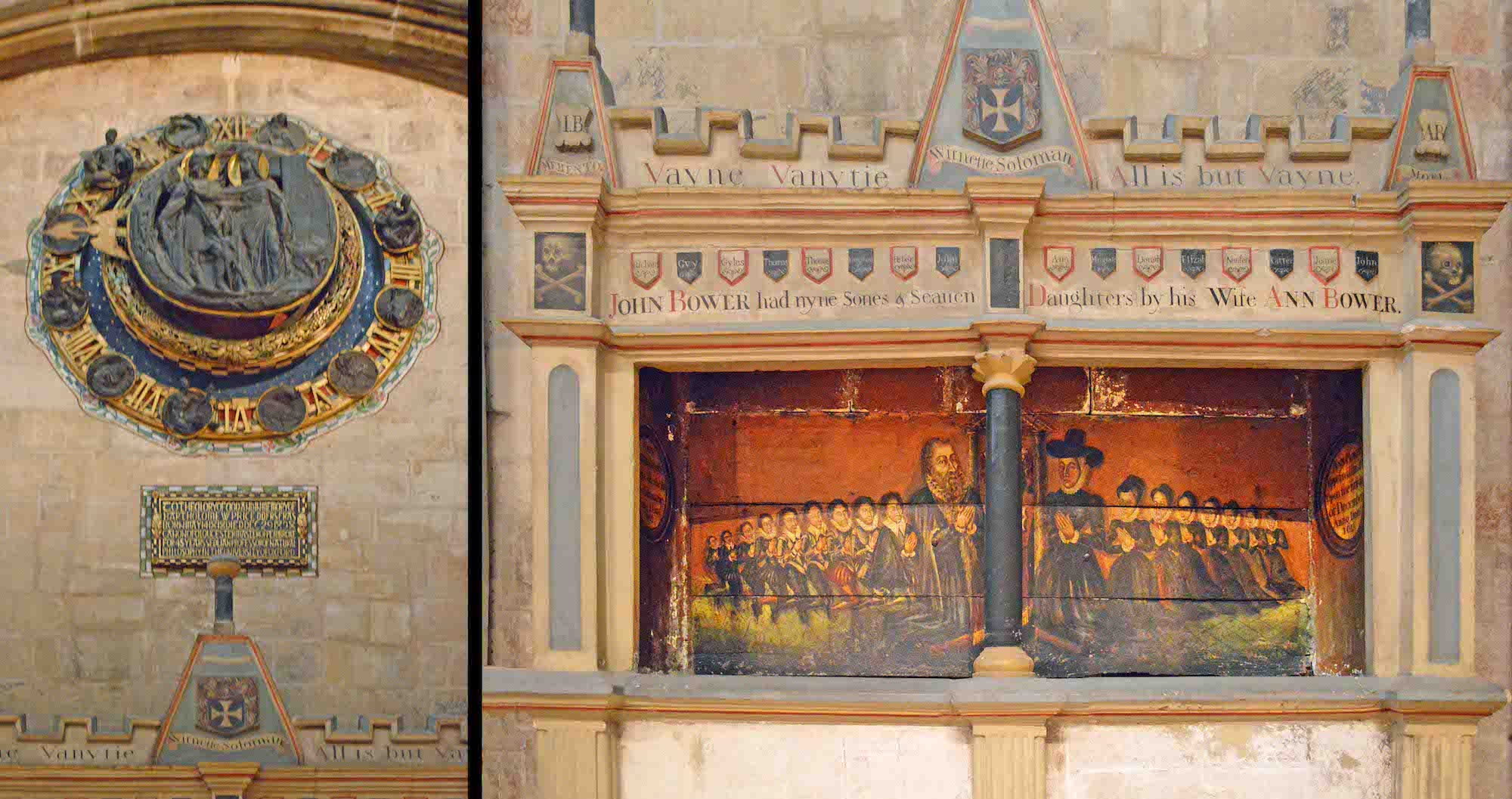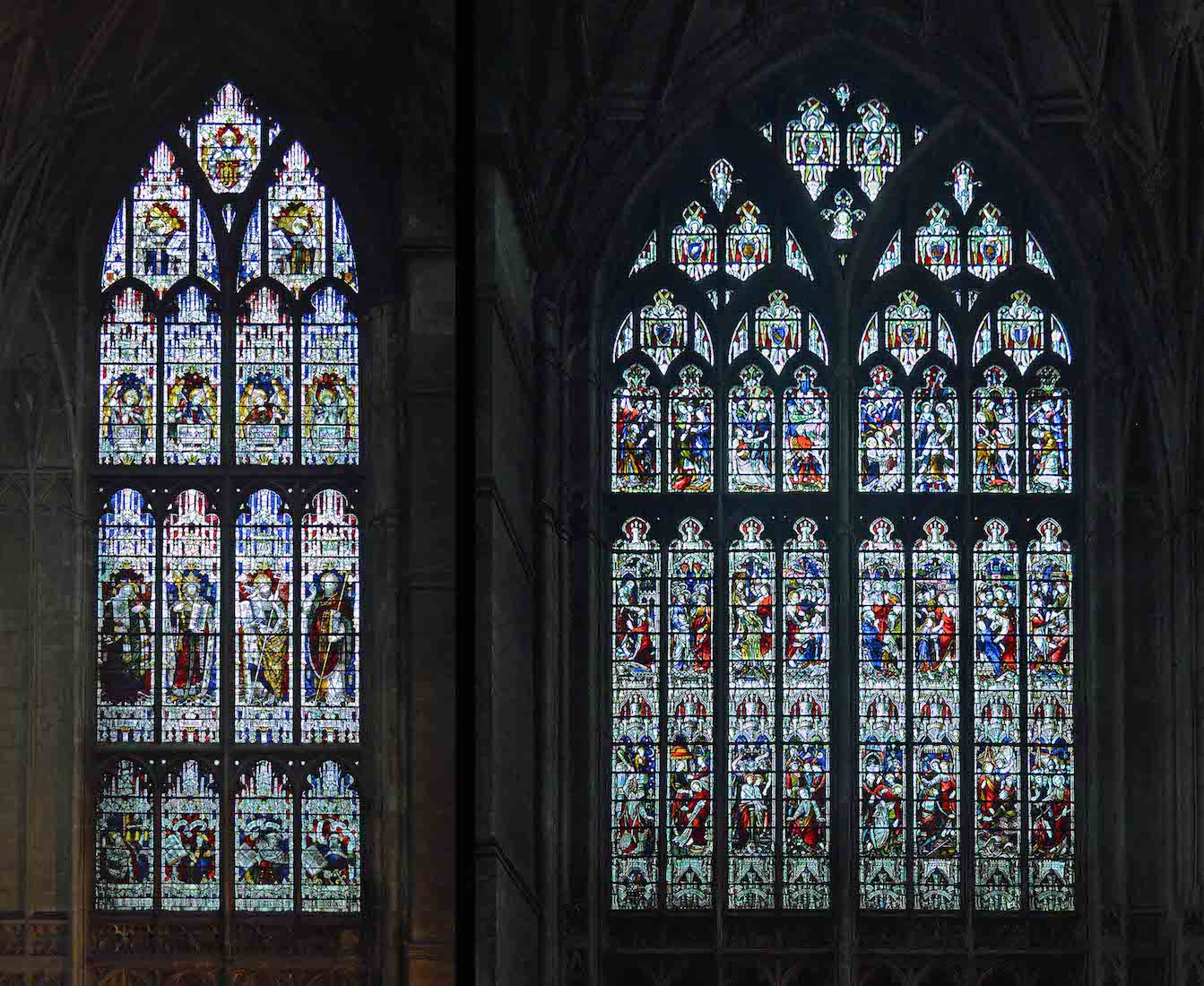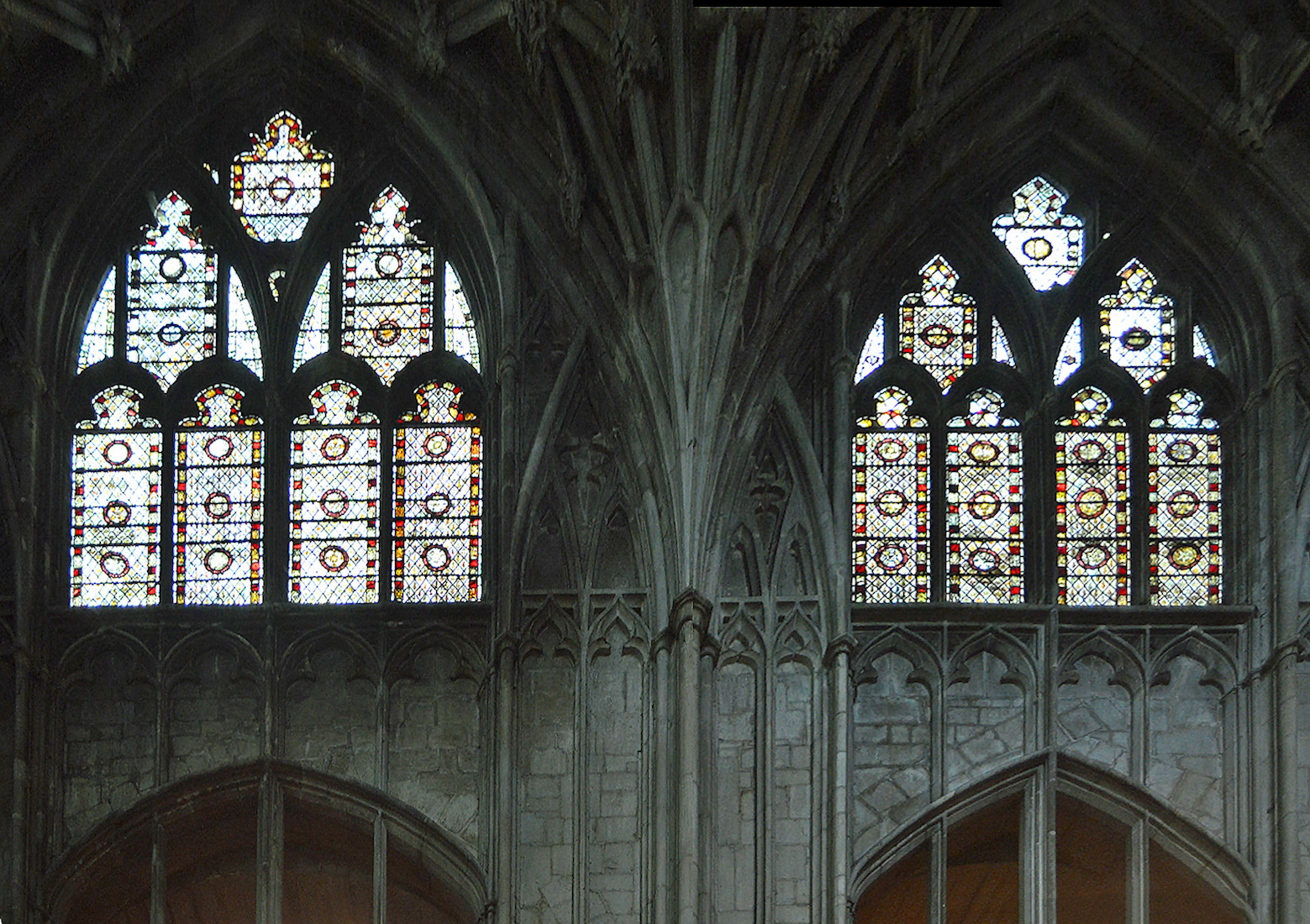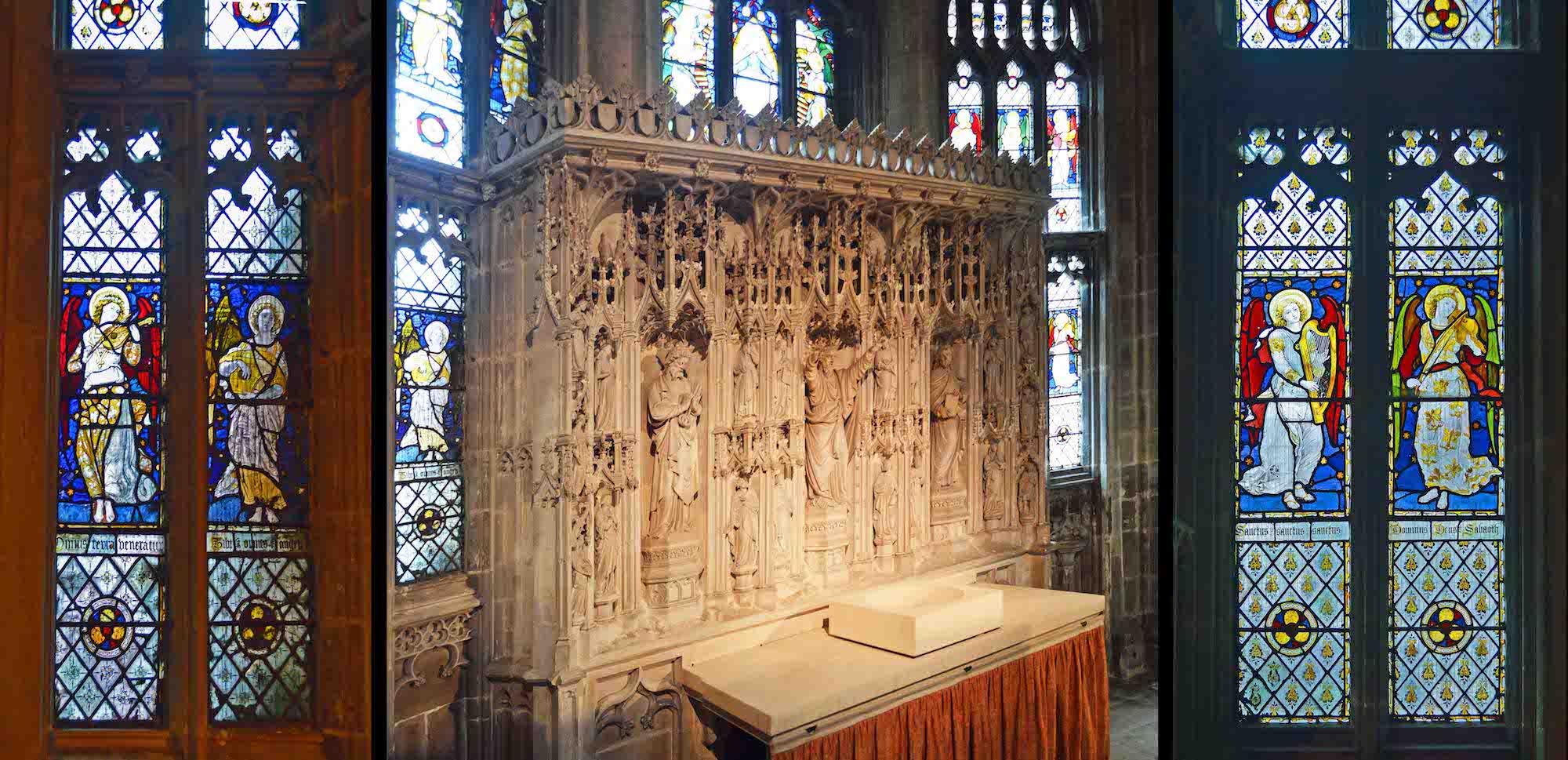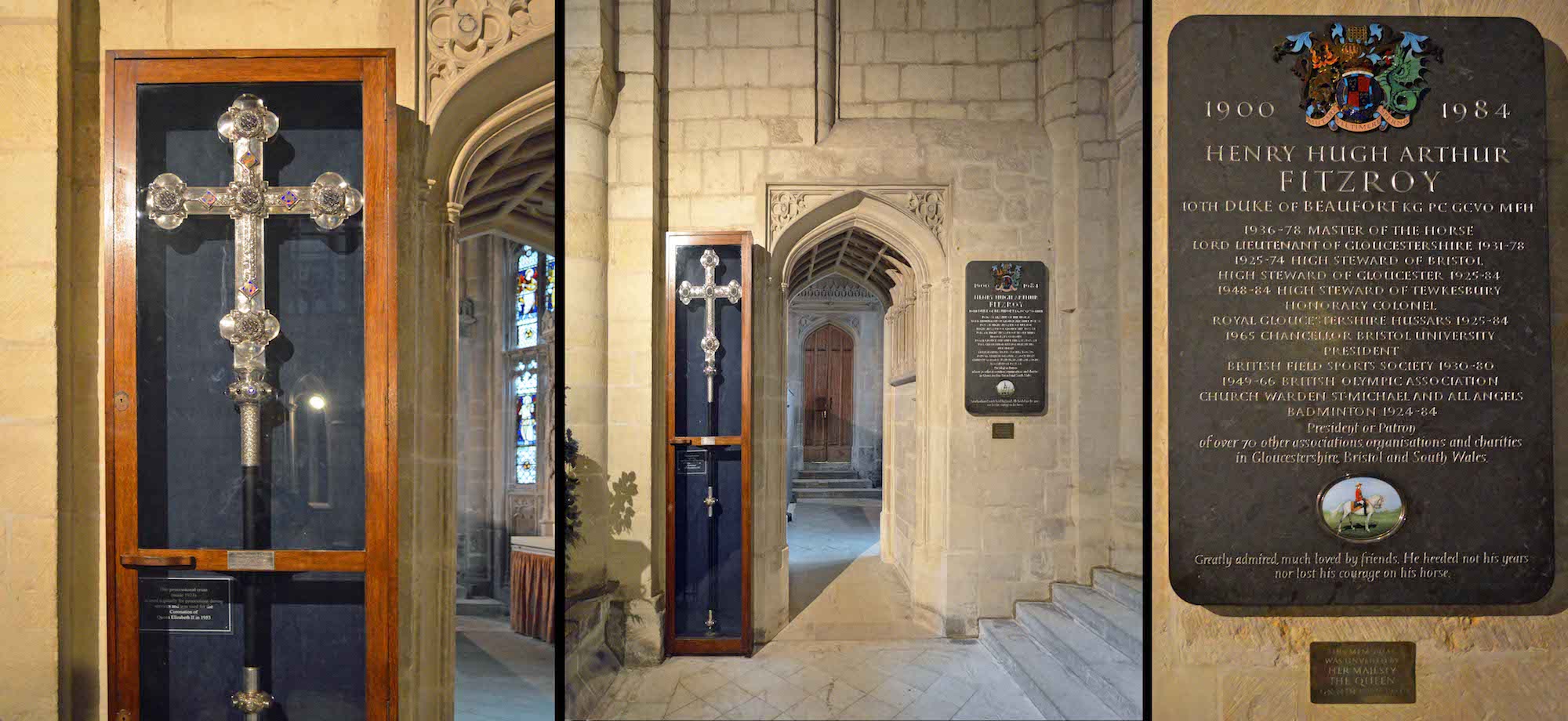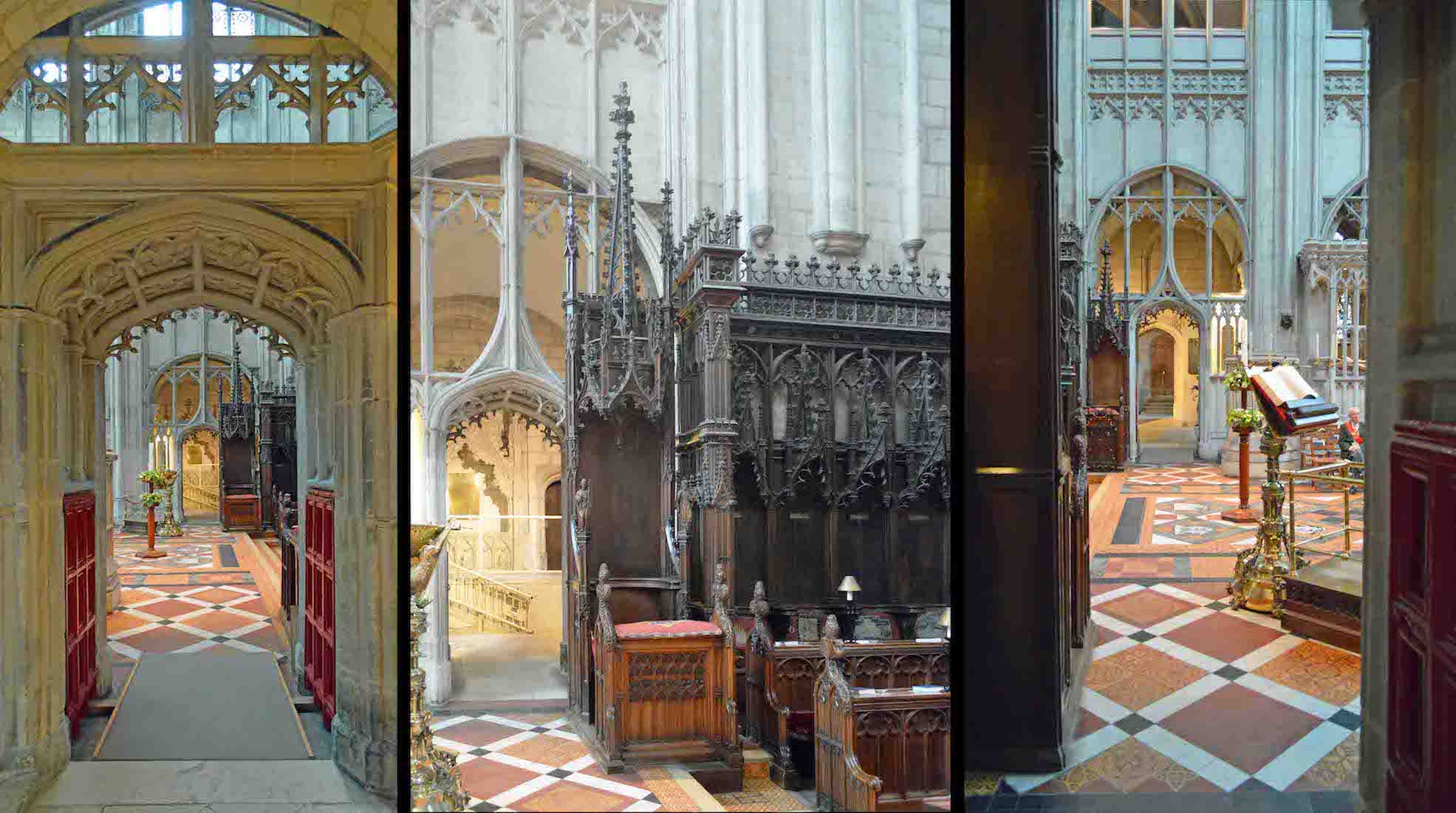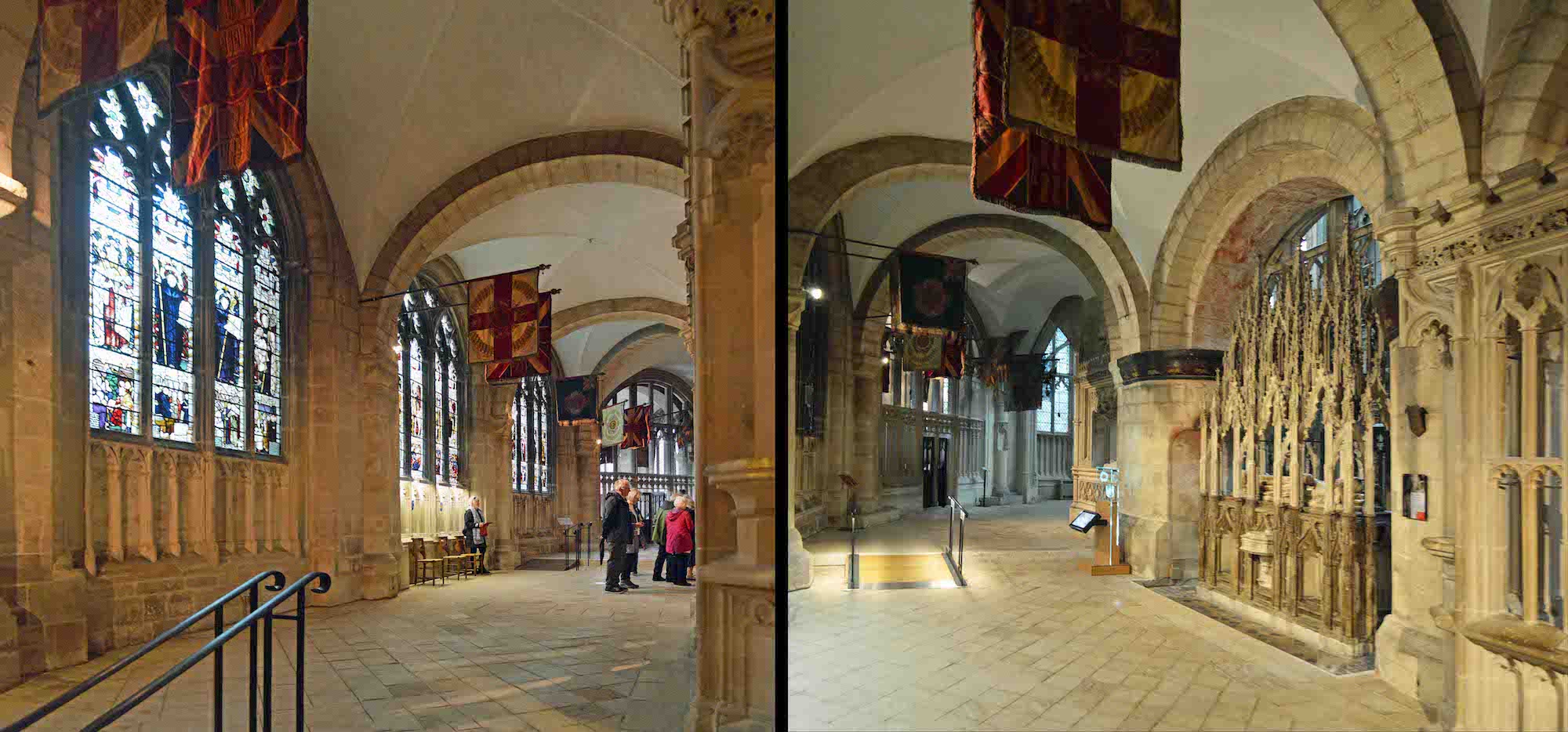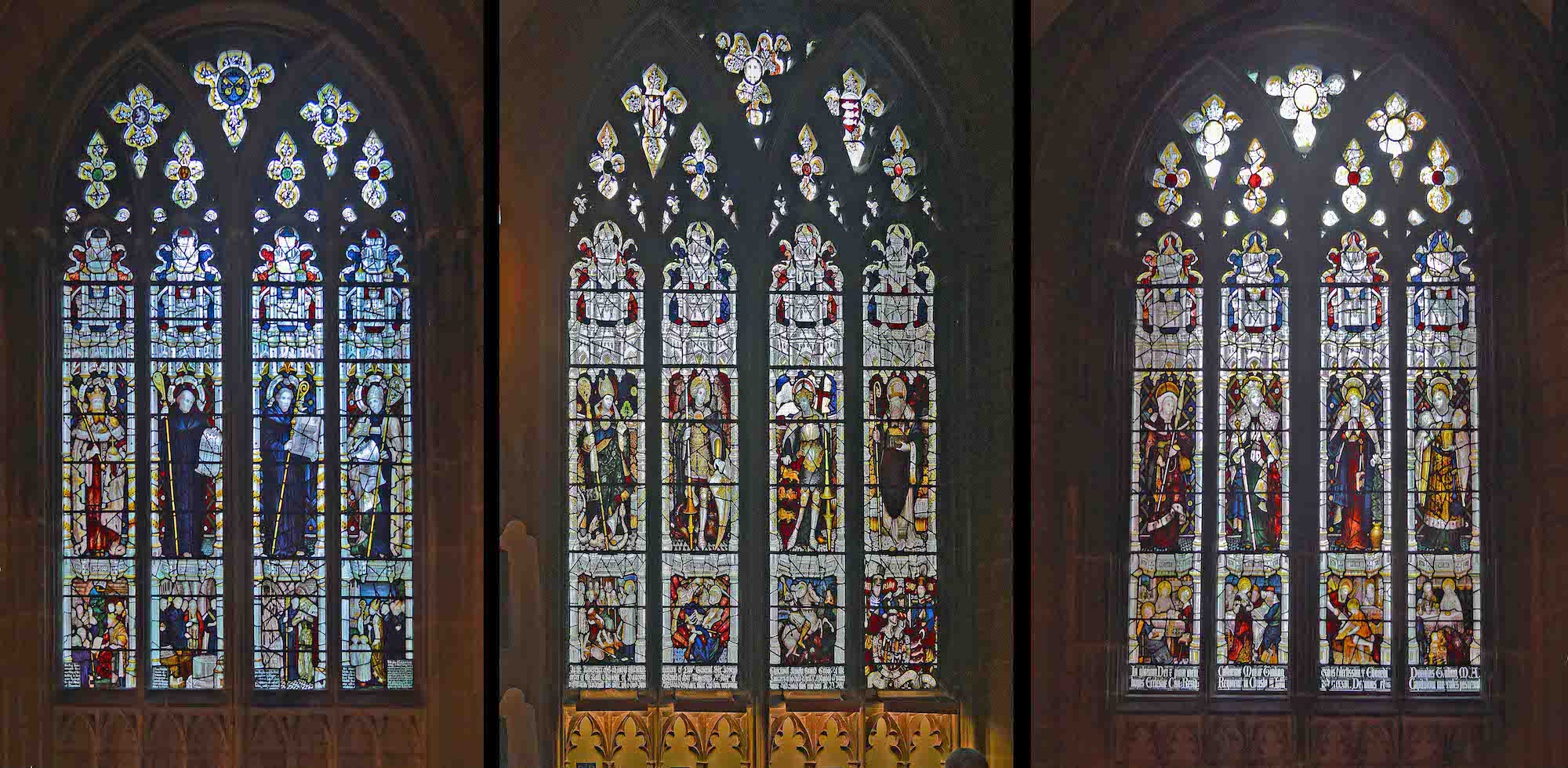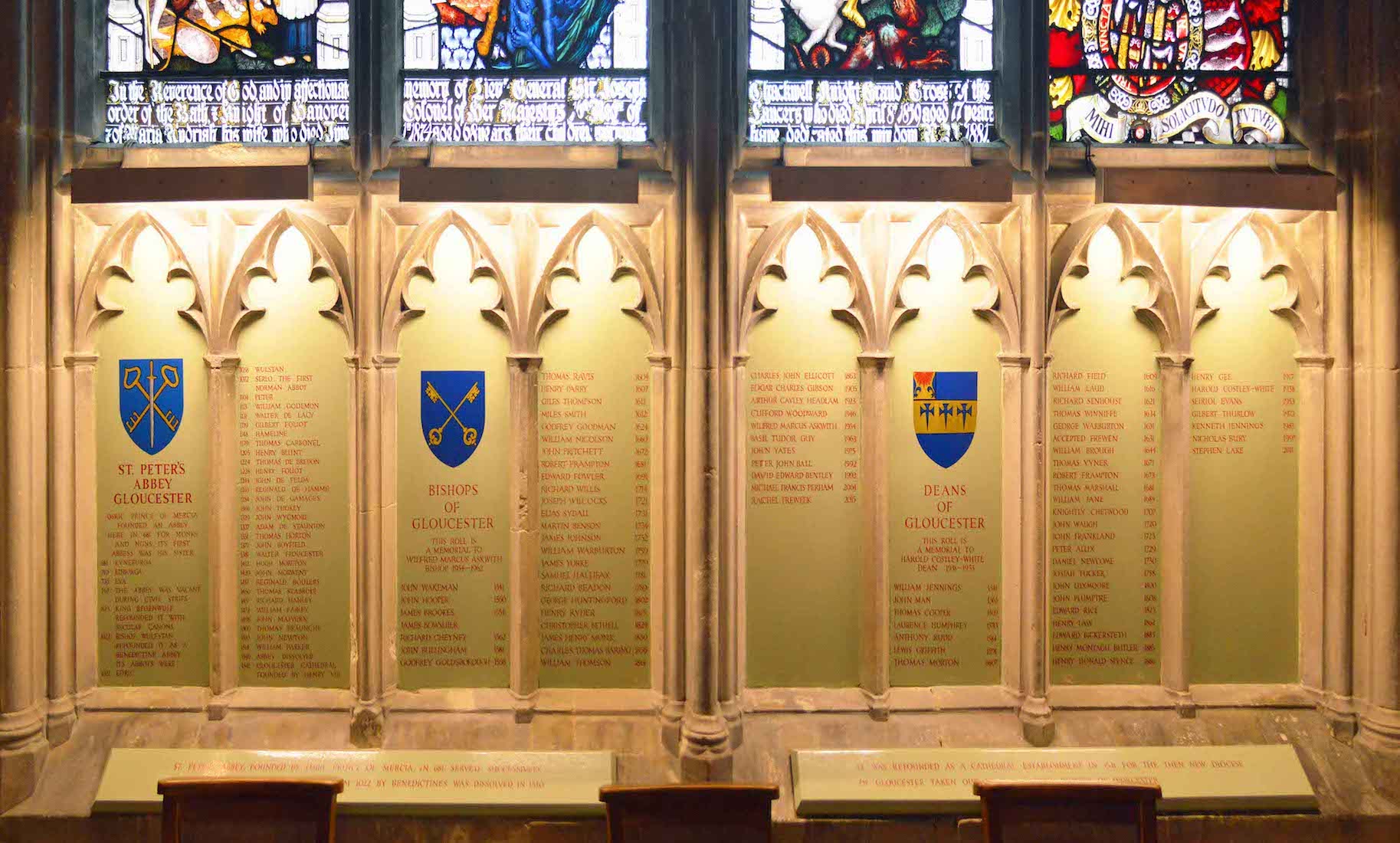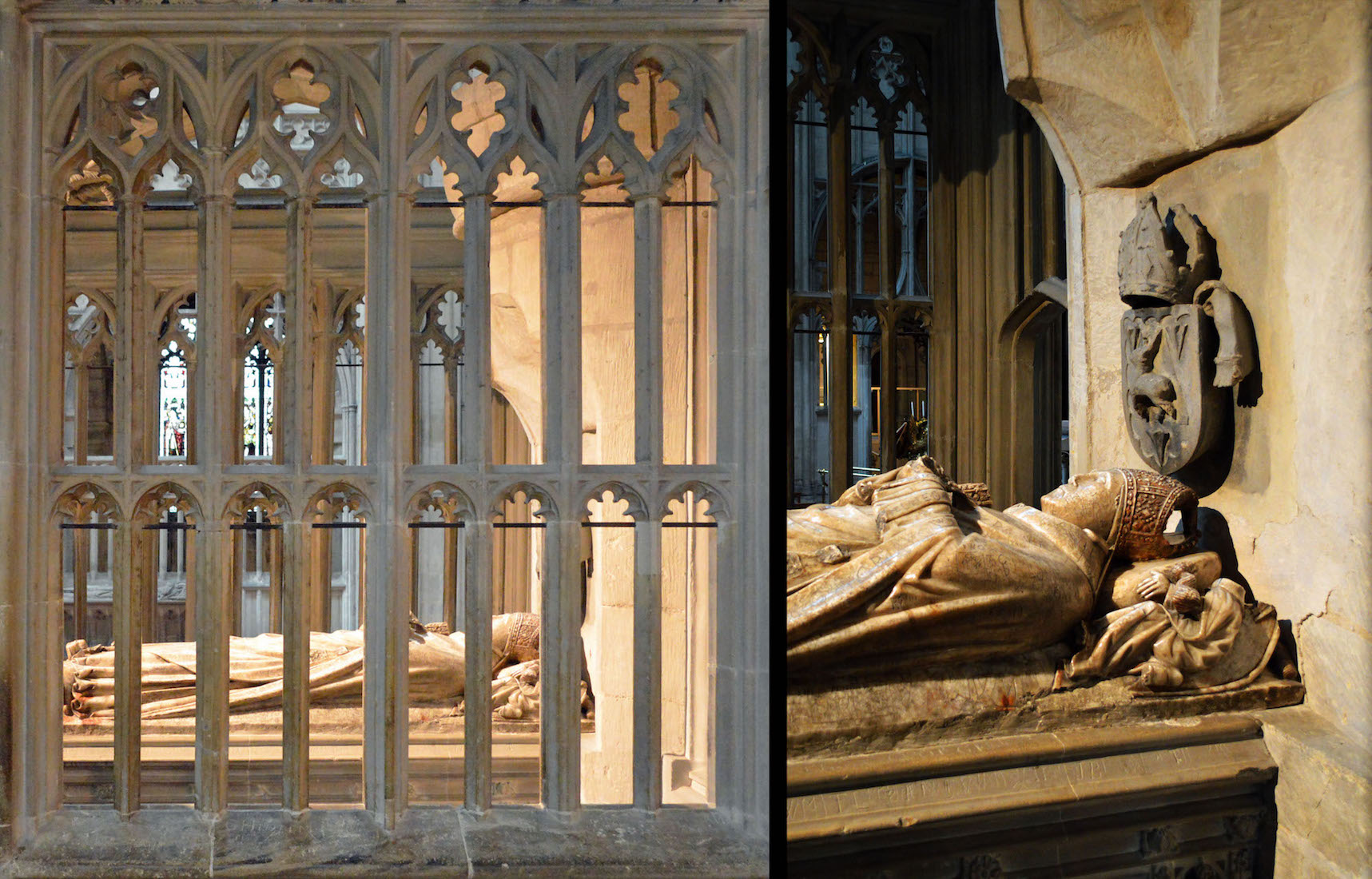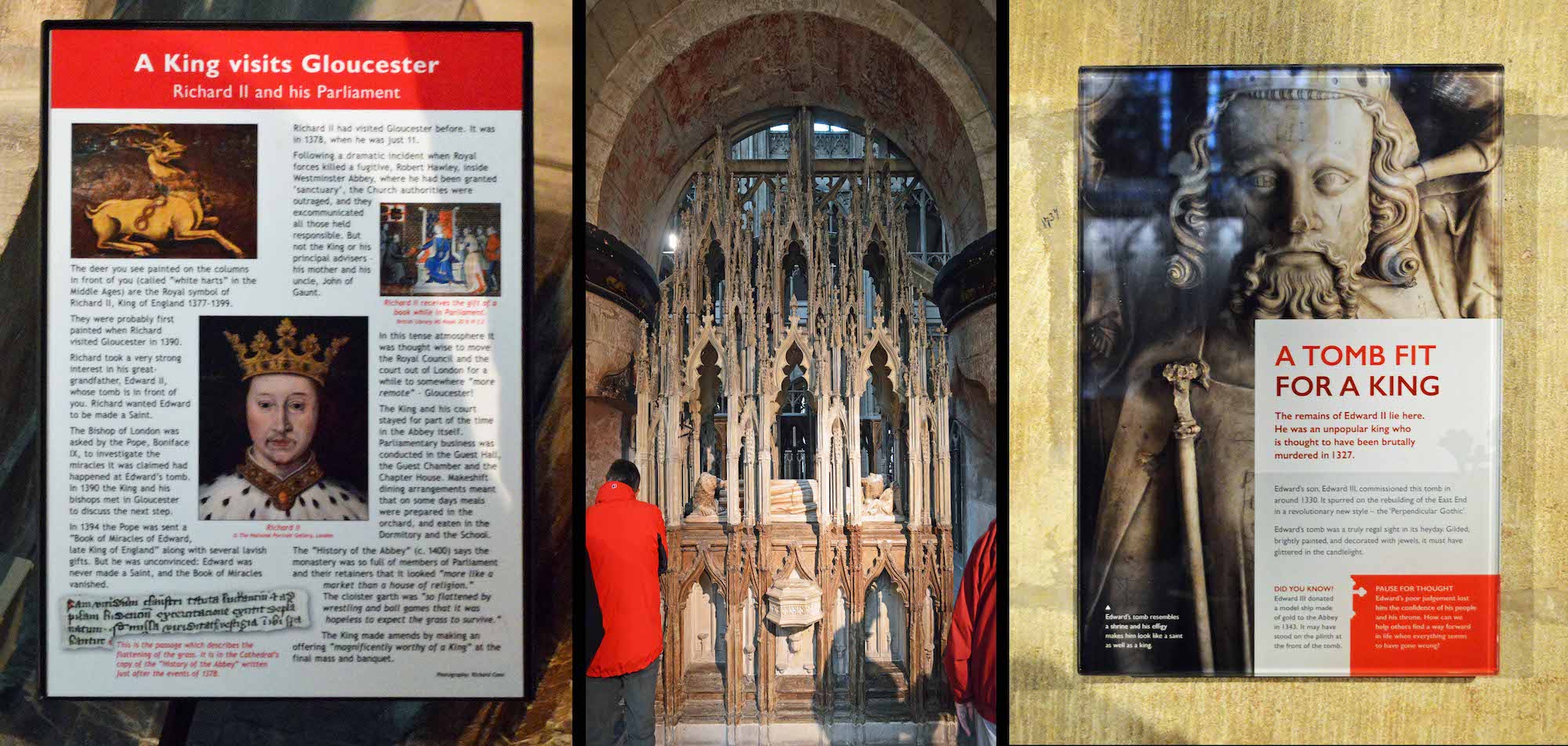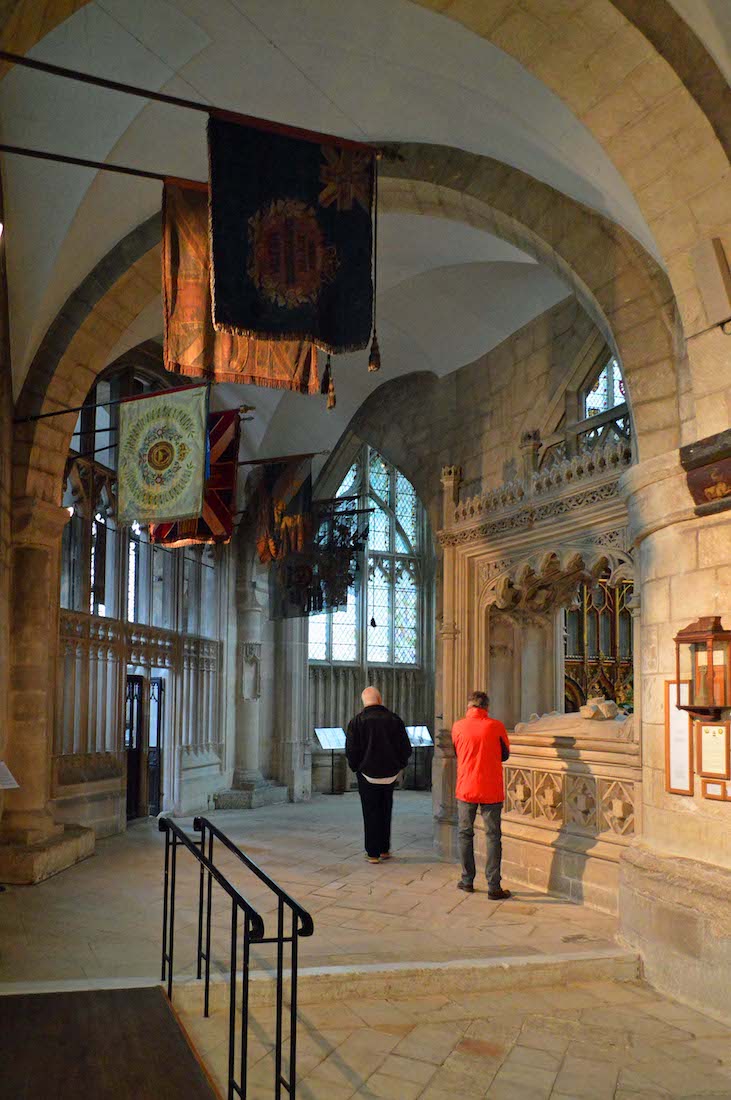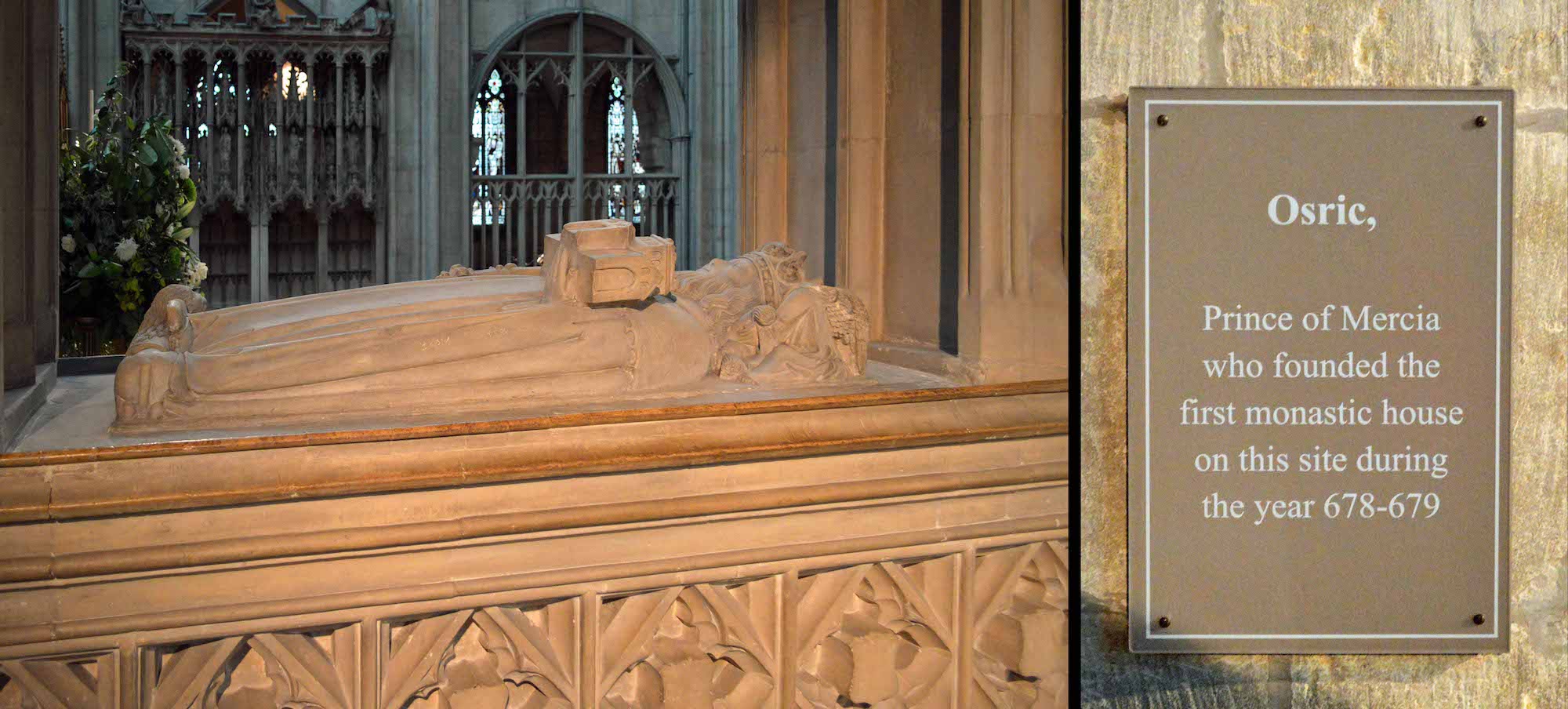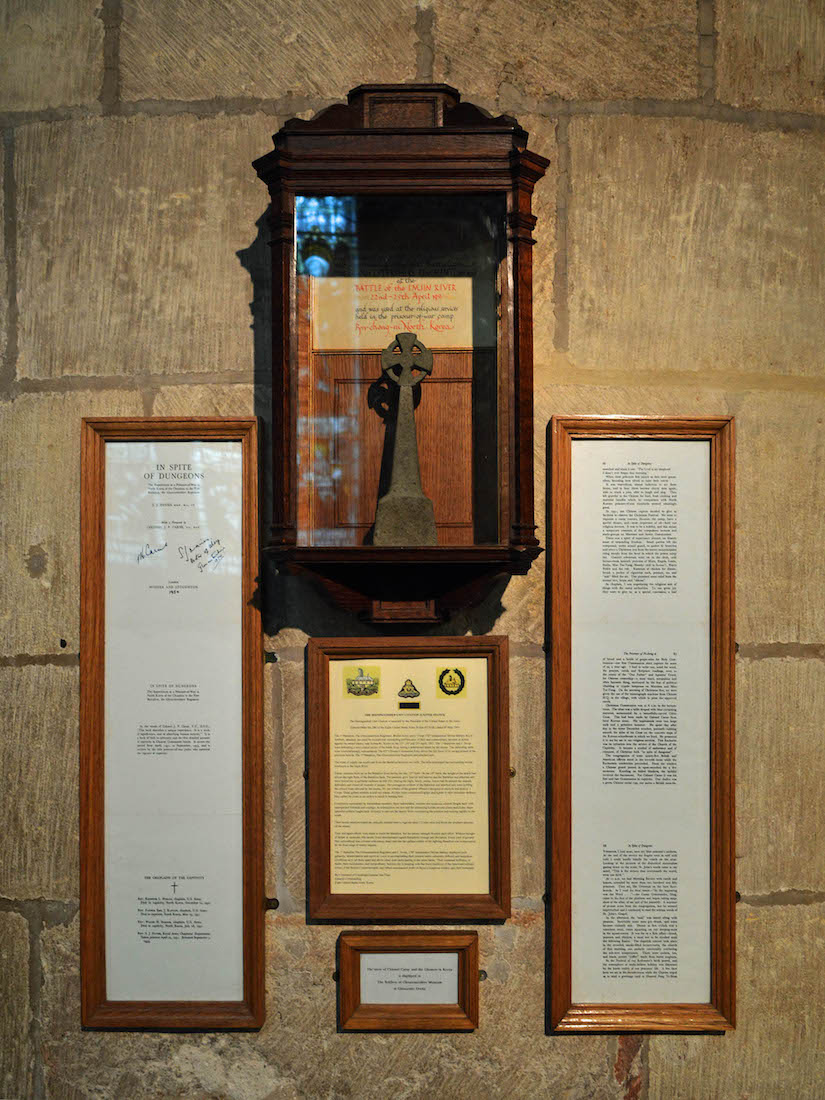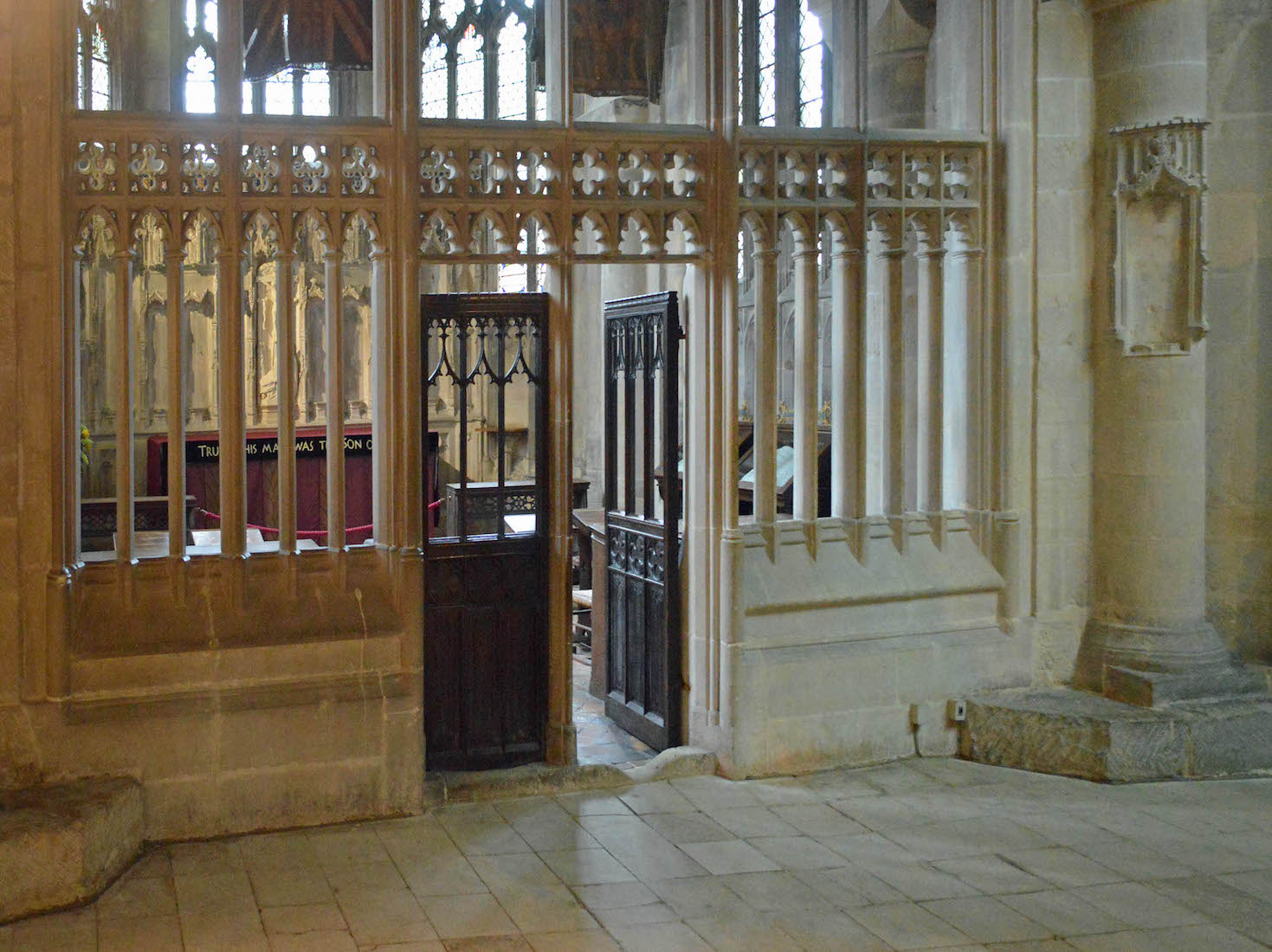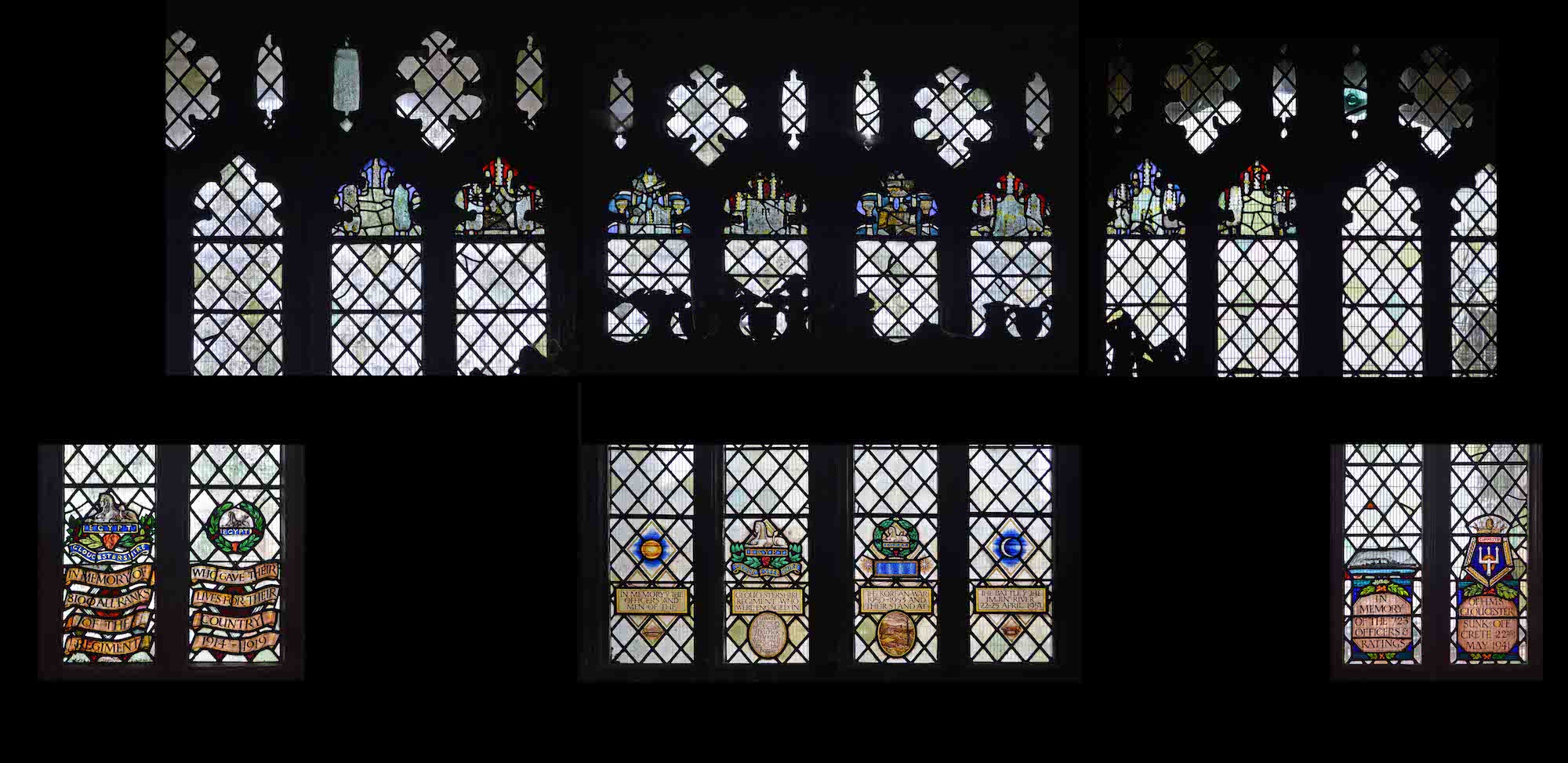
The transept vaulting is spectacular, even though the bosses are not highlighted in gold. We observe that although there are two West windows in this transept, one is made up of clear glass. PLAN
62. TRANSEPT WEST WALL
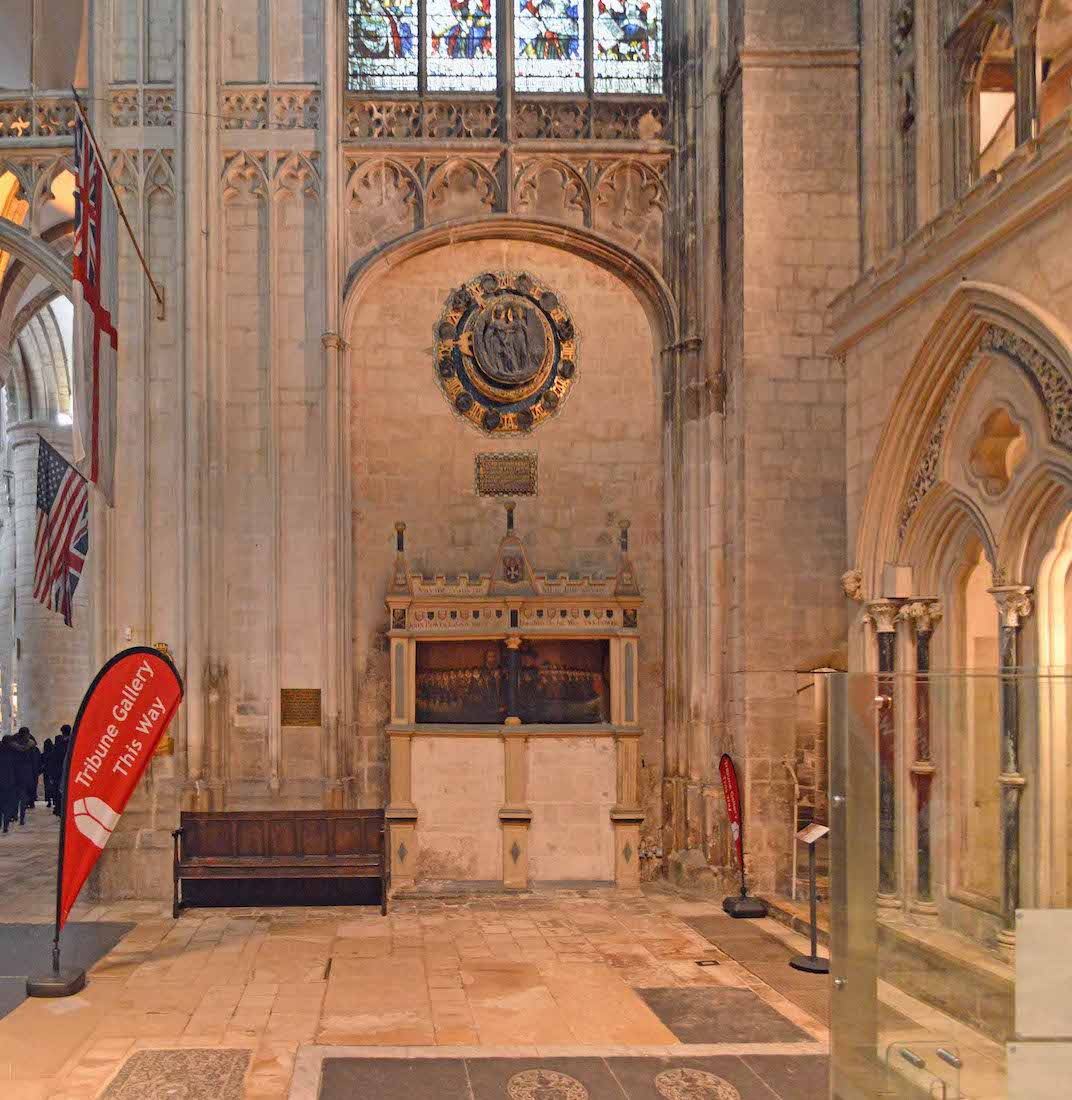
Turning to the West wall, we see there is an old clock and a memorial of some sort beneath.
63. OLD CLOCK AND MEMORIAL
This ornate clock was made by Henry Wilson (1864-1934), a well known Art Nouveau designer, and installed in memory of canon of Gloucester Cathedral, the Rev. Bartholomew Price (1818 – 1898). Bronze medallions showing signs of the zodiac portray the hours. In the lower memorial, John Bower (d. 1615), a Gloucester apothecary is depicted with his wife Anne (d. 1613) and children. The couple had nine sons and seven daughters, whose names are shown in shields above, along with skulls and mottoes.
64. NORTH TRANSEPT WINDOWS
• West window (left): Glass by Kempe, 1894. Depicts from left to right: Bezaleel, Solomon, S Gregory, S Johan –?– • North window (right): Glass by Hardman depicting The Life of St Paul, 1876. The upper part shows scenes from the Martyrdom of St Stephen, below are scenes from St Paul's life, from top right: Paul's sight is restored, he is introduced to the Apostles, Elymas the sorcerer, The offering of the Priest of Jupiter, the Council of Jerusalem, Paul casts out a spirit, restoring Eutichus to life, and before Felix. Lower tier: Paul let down in a basket, making tents, beaten with rods, stoned, dragged out as dead, delivered from prison, shipwrecked and shaking off the viper. The window is dedicated to Sir Michael Hicks-Beach, d.1916. His arms are shown below.
65. NORTH TRANSEPT CLERESTORY WINDOWS
The two high clerestory windows in the transept East wall are quite colourful, but are decorated with a repeated abstract pattern.
66. ST PAUL’S CHAPEL
The little chapel leading off the North transept is St Paul’s Chapel, although the name seems not to be widely publicized. It has a simple altar and a carved reredos which largely obscures the three stained glass windows behind.
67. CHAPEL ALTAR AND WINDOWS
The four visible lights almost concealed by the altar show four angels praising God and making music. The reredos has three main figures: St Paul at centre proclaiming the Gospel, with St Peter at left (holding the Keys of the Kingdom) and St Luke at right.
68. CORONATION CROSS
There is a doorway from St Paul’s Chapel across to the North ambulatory. By the door is a Coronation Cross. It is a processional cross made in 1923 which is used regularly for processions during services, but was used for the Coronation of Queen Elizabrth in 1953. On the other side of the doorway is a dark memorial tablet for Henry Hugh Arthur Fitzroy, 10th Duke of Beaufort who lived 1900–1984, and who obviously lived life to the full.
69. VIEWS ACROSS QUIRE
Directly opposite here we have a view right across the presbytery, just East of the cathedra. The ‘wicked pulpit’ appears less scary when viewed from the reader’s angle!
70. NORTH AMBULATORY
We proceed with our tour by following around the North ambulatory. There are three stained glass windows along the wall to our left with hanging colours. Also on this wall is some sort of highlighted listing. On the right side are several tombs.
71. NORTH AMBULATORY WINDOWS
Each window of the North ambulatory depicts four figures. From left we see: • King Osric, Abbot Serlo, Abbot –?–, Abott –?–; • St Patrick, St Michael, St George, St Columba; • St Martha, St Catherine, St Mary (the Virgin), St Mary –?– .
72. NORTH AMBULATORY CLERGY LIST
These detailed lists give the names of the Founders and Abbots of St Peter’s Abbey, Gloucester from 682 to 735; then the Abbots from 1022 to 1541, when the Abbey became a Cathedral, founded by Henry VIII. There is then a list of Bishops from 1541 to the present time.
73. ABBOT PARKER EFFIGY
There are three tombs / effigies at this corner of the North ambulatory. The first is this effigy and tomb of of Abbot William Parker who died in 1539. The effigy is made of painted alabaster.
74. TOMB OF EDWARD II
Edward II, son of Edward I, became King of England. He was born at Caernarvon Castle in 1284, and succeeded to the throne in 1307. His reign was a time of turmoil, with famines, military defeat by Robert the Bruce of Scotland at the battle of Bannockburn in 1314, and political dissensions over a succession of royal political advisors. He was deposed by his wife, Queen Isabella, and her lover Roger Mortimer. He abdicated in favor of his son Edward III in 1327, and was murdered in the same year at Berkeley Castle. His magnificent tomb was ordered by his son Edward III, when he reached the age of 18 in 1330. The tomb has a canopy of Caen stone and three gabled arches. The effigy is of alabaster.
75. NORTHEAST AMBULATORY
Further along the ambulatory, there is another tomb on the right, and just beyond, a chapel on the left.
76. OSRIC TOMB
Prince Osric of Mercia founded the first monastic house on this site during the year 678–679. Osric was a king of the Anglo-Saxon kingdom of the Hwicce, perhaps reigning jointly with his presumed brother Oshere. Osric is claimed as the founder of two monastic houses, one at Bath (now Bath Abbey) and the other at Gloucester (now Gloucester Cathedral).
77. GLOUCESTER REGIMENT KOREA DISPLAY
This display is on the ambulatory wall just along from the Osric tomb. Various memorabilia from the Gloucester Regiment in Korea are shown. At top is the Carne cross, 1951. Lt Col J.P. Carne, Commander 1st Battalion The Gloucester Regiment was prisoner of war in Pyn-Chong-Ni, North Korea. He made the cross from local Korean stone using only two nails and a primitive hammer. He smoothed the sides of the cross by rubbing them upon the concrete step of the school house in which he was housed. The cross was first used at the communion service in the POW camp, Christmas 1951.
78. REGIMENTAL CHAPEL
Opposite the display is the Regimental Chapel. “By our deeds we are known” is the motto of The Gloucestershire Regiment. Since 1694 the Gloucestershire Regiments have served courageously and unforgettably in every major conflict, and are currently part of The Rifles and the Royal Wessex Yeomanry respectively. Let us investigate the chapel ...
79. CHAPEL ALTAR
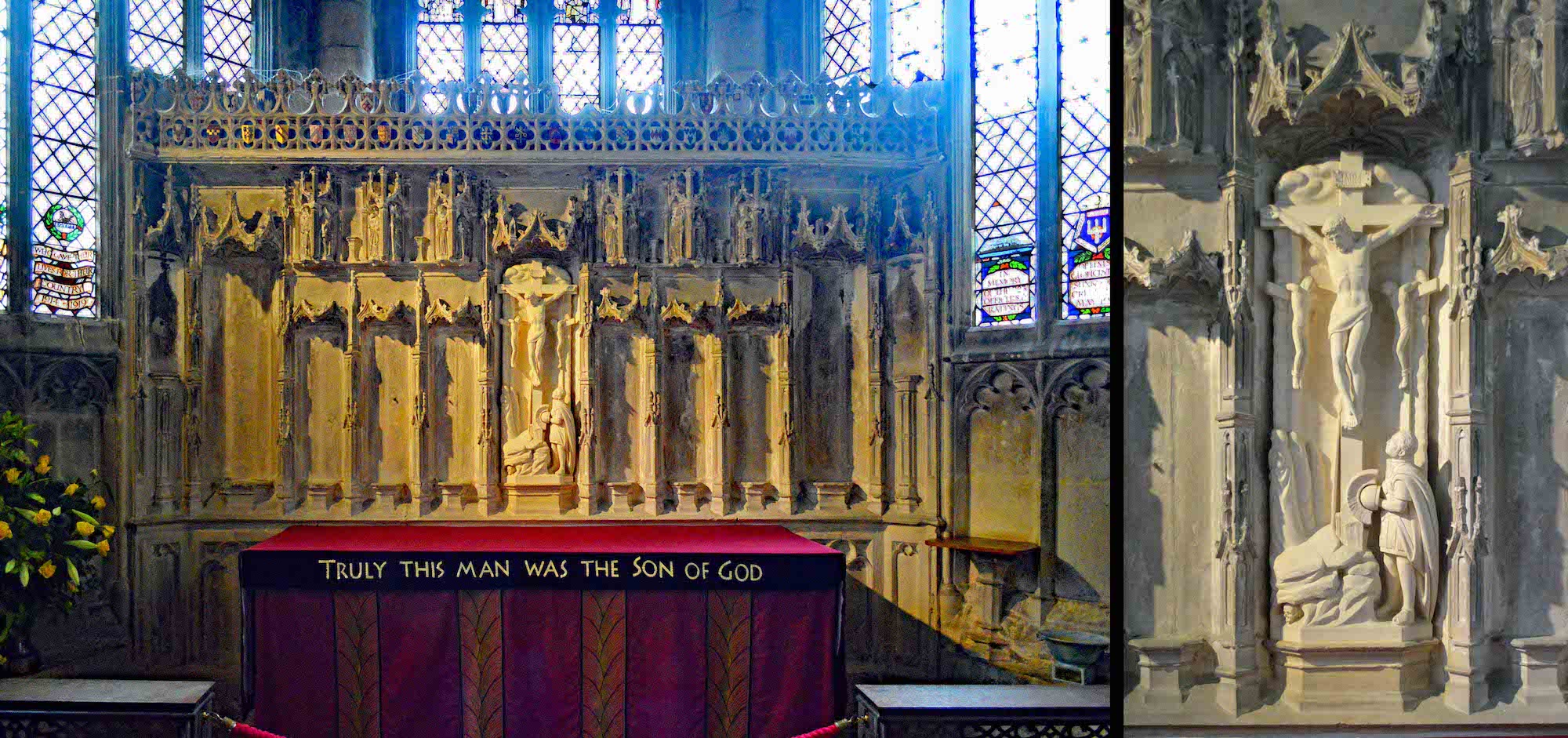 The reredos behind the altar is striking. There are many niches, but only the central niche is filled, with a depiction of the centurion at the base of Christ’s Cross. Underneath is the inscription: ‘Truly this man was the Son of God’.
The reredos behind the altar is striking. There are many niches, but only the central niche is filled, with a depiction of the centurion at the base of Christ’s Cross. Underneath is the inscription: ‘Truly this man was the Son of God’.
80. CHAPEL WINDOWS
The Chapel windows are mostly of clear glass with a diagonal lattice pattern. In various places, colourful decoration and memorial text has been inserted, remembering those lost in WWI, those on the HMS Gloucester sunk off Crete in May 1941, and those lost in the Korean War 1950-1953.


